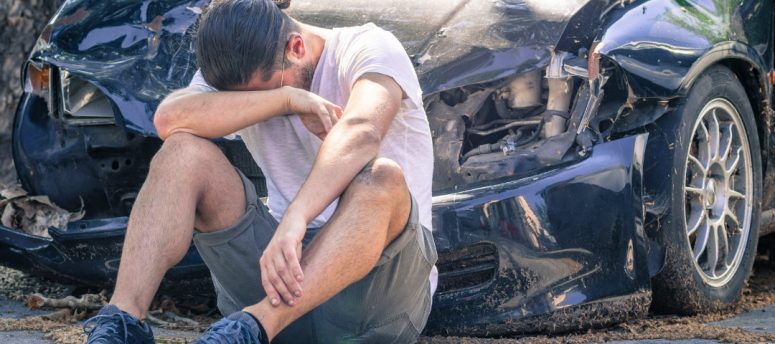I am a careful driver. I don’t have any history of accidents, whether from my own doing or anyone else’s. But I also don’t have any illusions – almost every other day I have some kind of close call situation. There are always people who don’t look before driving, or who change lanes without checking their blind spots, or who reverse out of a parking spot without checking. Sometimes, I’m even guilty of those things and only remain accident-free thanks to good luck and quick reflexes. With Harley along for the ride, I’m even more aware of the risks, and the importance of car seats, particularly rear-facing car seats.
When I was getting ready to start work on this campaign, I was chatting with Mandy-Lee Miller, the awesome lady of Pregnant in Cape Town and mastermind of the #CarseatFullstop campaign. We were talking about moving her adorable little girl into a rear-facing car seat and how it had made her even more worried about getting rear-ended. I hadn’t even thought of that! Would Harley be more at risk in a rear-collision? Or what if we were hit from the side? Actually, no, and it all comes down to science.
The main thing to consider here is what’s called “ride-down” in a crash. This is the amount of time you have to go from moving to stopping.
So, if you think of all the crazy crash test videos we see, that’s a pretty fast ride-down because the car stops pretty much the moment it bashes into the wall. As explained by these crash safety experts:
The longer the “ride-down,” the more time your skeleton and organs have to absorb the crash energy. Longer time means less power is transferred to your body, and less chance of injury.
[…] This term simply refers to the time it takes for a person to come to a complete stop in a crash. This is important because the total force on the passenger increases with both the weight of the person and with the speed they were traveling before the crash. On the other hand, the total force on the passenger decreases significantly as the time it takes to stop increases. While we have often have no control of the speeds involved in a crash, we can do some things to help increase the time it takes for a passenger to come to a stop. As mentioned earlier, in a frontal crash the vehicles are often traveling in opposite directions at high speeds. When they crash, both vehicles stop very suddenly, in a small fraction of a second. Even a slight increase in this stopping time can reduce the risk of injury considerably. This is perhaps the most fundamental concept in keeping passengers alive in a crash.
Rear-end collisions are a different story, though. When you are rear-ended, you and the other car are moving in the same direction, albeit at different speeds. Most rear-end collisions are at slow speeds, meaning that injuries are pretty minimal. Even at high speeds, your car has the ability to move forward as it comes to a stop, resulting in a much longer ride-down and lower risk of fatalities.
Most car accidents occur between two vehicles – either you bash into another car or they bash into you. So, either you collide head first with something, someone crashes into the side of your car, or they rear-end you.
According to research, one in four collisions are side impact crashes.
They are still better than frontal collisions because the car can take more time when coming to a complete stop, but can also be more dangerous because there is no crumple zone and there can be more flying debris reaching the back seat thanks to shattering windows. This is why car seats need to have proper headrests, as well as side walls to help protect our little ones from protrusions and flying debris. Here is a video that shows what a side collision looks like with correct restraints:
I know, I keep talking about how important car seats are and I’m sounding like a broken record. The thing is, rear facing is simply the safest you can be. There’s a reason that astronauts are rear facing when they fly off into space or return to Earth. And, while we might worry about getting rear-ended or T-boned, the likelihood is that if we get into an accident, it will be a front on collision, especially if you are a careful driver – if someone else jumps the red light or skips the stop sign or swerves out of their lane in front of you, you simply won’t be able to stop fast enough to avoid smashing into them.
In that scenario, your precious cargo is vastly safer in a car seat – particularly a rear facing one. In case you have forgotten, here is a comparison video of rear facing vs forward facing car seats in an accident:
During our family holiday, driving for long distances pretty much every day, I realized just how dangerous it was. I’m glad we arrived safe, that all went well, but it could all go so wrong so quickly. There was the car stopped on the side of the road that wasn’t quite out of the lanes of oncoming traffic. Or the guy who slammed on brakes for no apparent reason. Or simply the stress of overtaking a truck on a single-lane highway, racing the oncoming traffic towards safety. Each time, I’d look at Harley, so relieved that she was so safe in her rear-facing Volvo seat. It was morbid and stuff, but I felt strangely comforted knowing that even in a horrific and possibly fatal crash, she would be the safest out of all of us.
I know some people wonder about the rear facing seats and bigger kids, particularly wondering if it’s safe for their legs.
First up, they can still be totally comfy, letting their legs rest up the seat back or splayed to the side – just look at the bizarre ways toddlers sit anyway. But I know some people worry if the kids won’t break their legs in a crash. First of all, I’d personally rather deal with broken legs than a broken neck, but even more interestingly, research says that “there are no known cases of a rear facing child breaking their legs. It is however quite a common injury in forward-facing car crash victims.”
That’s right – there’s a higher risk of them breaking legs facing forwards than backward! It makes sense, too – just watch the legs in this video comparing front and rear facing seats – I reckon it comes down to the fact that in front facing seats the legs still aren’t resting in the footwell but rather stick out. Plus, by the time the legs hit the backseat in a rear-facing car seat, most of the force has already been absorbed.
We all want to think that we are doing the best for our little ones, that we are protecting them from the world and helping them to grow up to be awesome human beings. We all have our own ways of doing it. But this, this is something that we can ALL do to save lives, to protect our babies. I know we all get busy, or you just need to drive a short distance down the road, or your kid is screaming as you buckle them up. But just think of the alternative.
Sure, a screaming kid sucks, and being late for an appointment is a pain, but I can’t imagine anything worse than losing a kid or having your little one horribly injured… especially if it’s your fault! I think about how awful I felt when Harley fell out of the bed, and she was totally fine. Just imagine if we’d had a car accident without her strapped in – I don’t think I could live with that kind of sadness and guilt.
I don’t normally ask people to share posts, but please, PLEASE share this. If one person you know reads this and straps in their kid, you could be saving a life. If one person in your circle of friends is looking for a new car seat and decides to stay rear facing, that could save a life. If one person you know reads this article and decides to share the info with friends, family, and schools, you could be saving the world, one precious little life at a time.
Full disclosure: the good people at Volvo have come on board to sponsor #CarseatFullstop, so I received compensation for my participation in the campaign. As always, though, I only accept work on campaigns I believe in. Here’s hoping that their sponsorship helps to spread the message further than would have been possible otherwise, saving the lives of our most precious cargo. #CarseatFullstop is sponsored by Volvo Cars. You can download the free Children and Cars Manual here.
DID YOU LIKE THIS POST?
If you like these words, please check out more of what I say on twitter and Facebook, and pics I take on Instagram and subscribe to my YouTube channel and follow me on Pinterest.
Also, please be sure to sign up to my carefully curated, crafted and infrequent newsletter.






